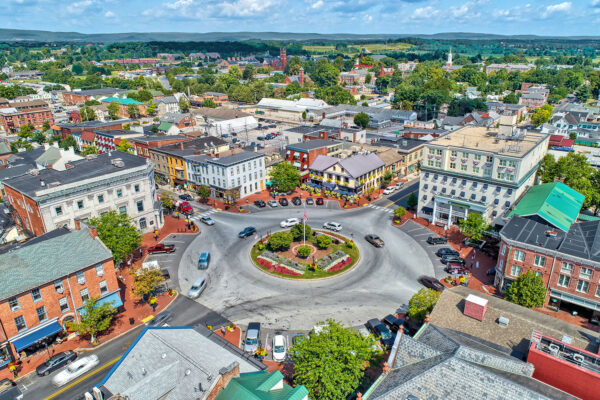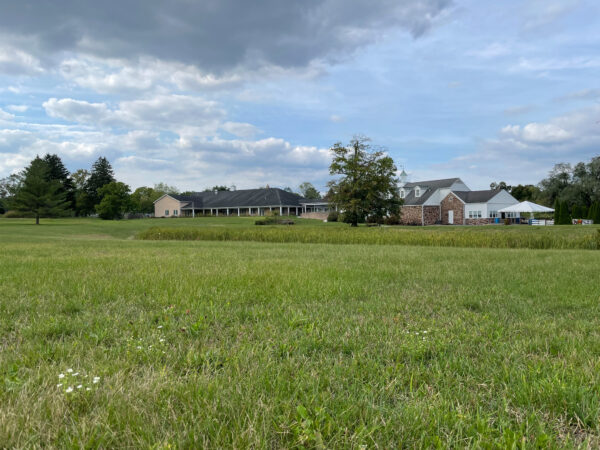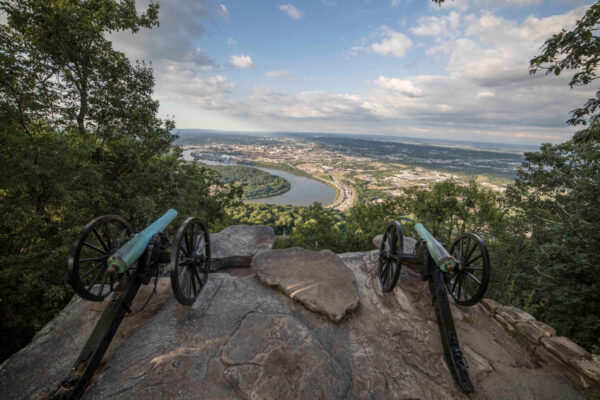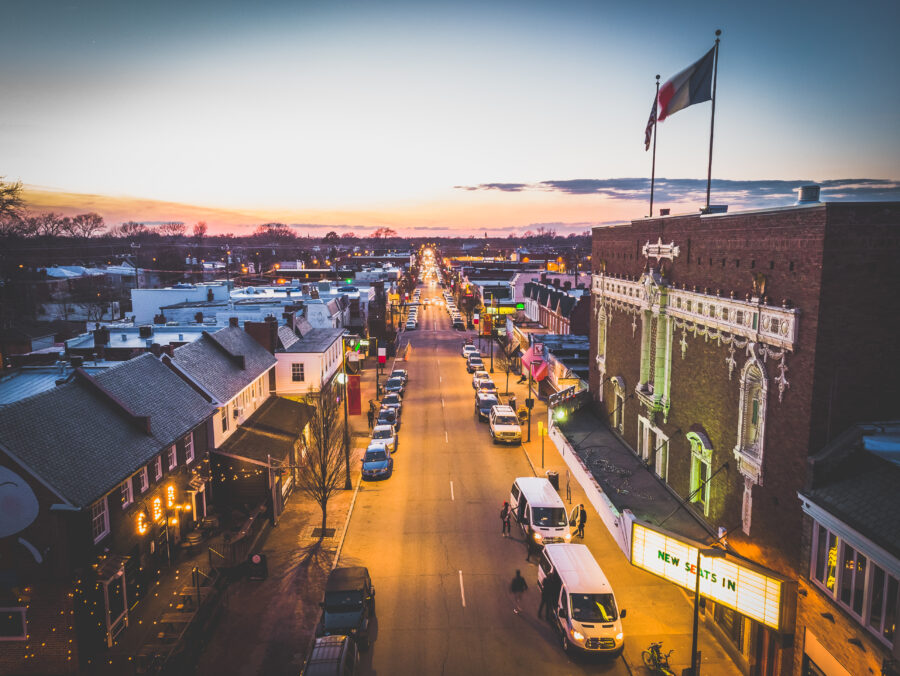
- Cary Street in Richmond, Virginia
Richmond, Virginia
If the Civil War could be considered a hurricane, Richmond was the eye. Battles large and small swirled around the Confederate capital in 1862 and 1864, producing tens of thousands of casualties and filling Richmond’s military hospitals, prisons, and burial grounds. The Richmond region of Virginia is today a trove of preserved battlefields, museums, and other historic sites— as well as a vibrant arts community and one of the top restaurant towns on the East Coast. We called on Richard Lewis, a resident, a volunteer at Richmond National Battlefield Park, and a former board member of the Virginia Civil War Sesquicentennial Commission, who retired in 2016 after 11 years at the Virginia Tourism Corporation, to create an itinerary for an efficient three-day visit.
Fast Facts
- Named after: Locality in England along the Thames River
- Incorporated: 1742
- Elevation: 213 feet
- Population: 229,395 (2022)
DAY 1

MORNING
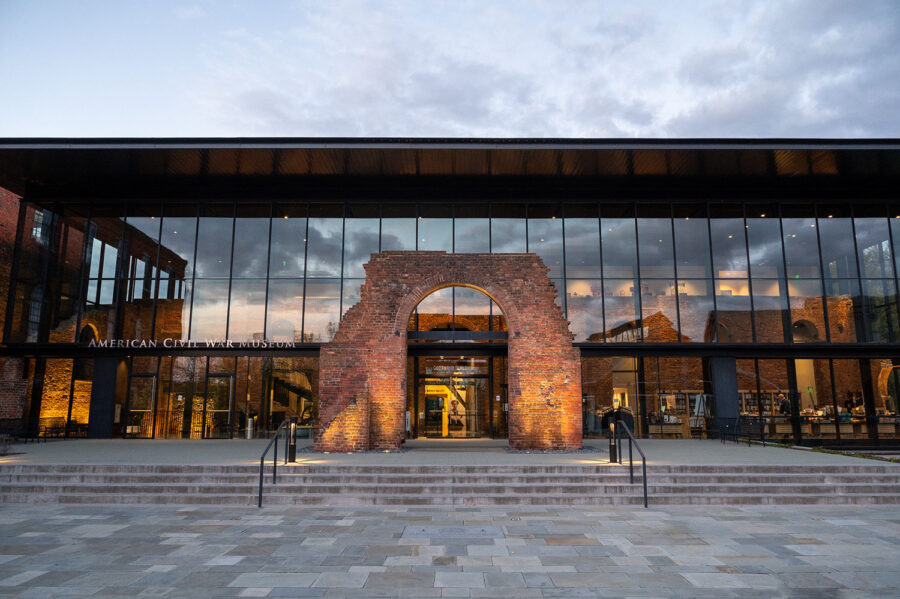 The American Civil War Museum
The American Civil War MuseumEntrance to the American Civil War Museum
Begin your Civil War experience with a visit to The American Civil War Museum (Call 804-649-1861) at Historic Tredegar. This excellent modern museum combines a stunning array of artifacts (including from the former Museum of the Confederacy) and engaging interactive stations to tell an all-encompassing story of the war that defined our nation. Afterward, visit Richmond National Battlefield Park headquarters at Chimborazo Medical Museum (Call 804-226-1981). Exhibits and a film detail the saga of the enormous Confederate hospital located on the site. Make sure to grab a park map, which you will need the next day for your battlefield tour. If you have time, tour nearby Historic St. John’s Church (Call 804-648-5015), where in 1775 Patrick Henry fanned the flames of the Revolution when he cried, “Give me liberty, or give me death!”

AFTERNOON
For lunch, head downtown to Penny Lane Pub (Call 804-780-1682), with its Beatles shrine in the entrance foyer and delicious British pub-style fare inside such as fish and chips and shepherd’s pie. Or try Bottom’s Up Pizza (Call 804-644-4400), a local favorite, where you can sit on a deck and watch trains pass overhead.
After you’ve refueled, take a tour of what is one of the country’s most historic buildings, the Virginia State Capitol. The building was designed by Thomas Jefferson and since 1788 has housed the oldest elected legislative body in America, the Virginia General Assembly. The Bill of Rights was ratified here and the Aaron Burr trial was held here. It served as the Confederate Capitol from July 1861 to April 1865.
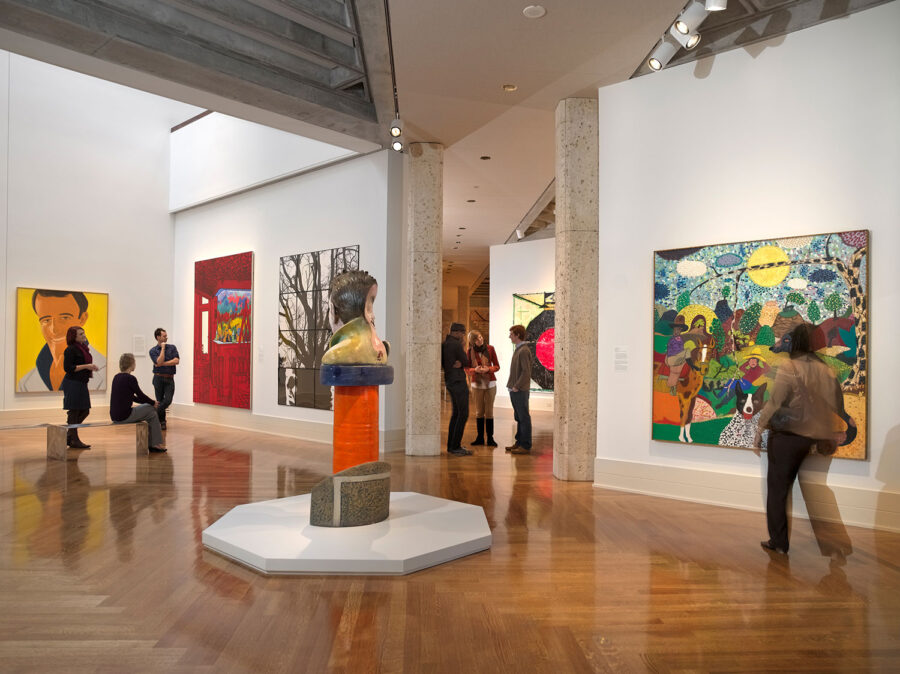 Richmond Regional Tourism
Richmond Regional TourismVirginia Museum of Fine Arts
Then broaden your horizons with visits to the Virginia Museum of Fine Arts (Call 804-340-1400) and the Virginia Museum of History and Culture (Call 804-340-1800), both on the same block of Arthur Ashe Boulevard. The art museum houses a tremendous collection of American and world art, some pieces from ancient Egypt. The history museum tells the story of the Commonwealth of Virginia. See the uniform of Confederate cavalryman J.E.B. Stuart and don’t miss the gallery housing the historic Confederate Memorial Military Murals.

NIGHT
Richmond is a city of outstanding restaurants, and you’ll have no trouble finding something you’ll love. For casual fare, longtime local favorite Stella’s (Call 804-358-2011) offers rustic and modern Greek dishes. For something more upscale, Henley on Grace (Call 804-783-9463), downtown on Grace Street, offers an extensive wine list.
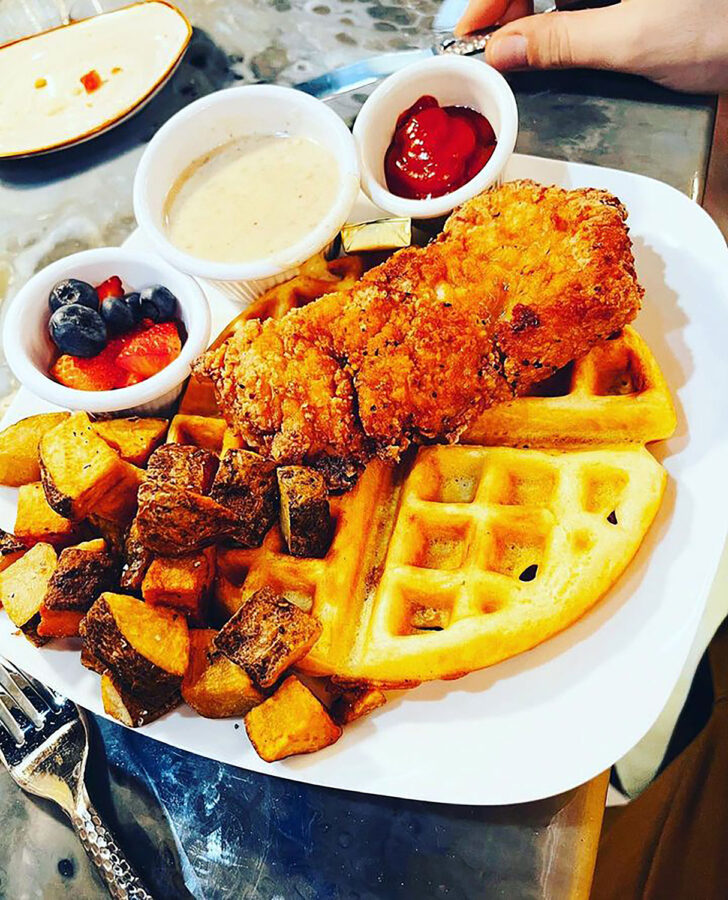 William Wright, Owner/Manager of Henley on Grace
William Wright, Owner/Manager of Henley on GraceChicken and waffles at Henley On Grace
If you haven’t already, it’s time to check in to your accommodations. Richmond offers all the national chain hotels. For something more local, stay downtown at historic Linden Row Inn (Call 804-783-7000), where a young Edgar Allan Poe once played in the garden, or, on the city’s north side, there is Virginia Crossings Hotel (Call 804-727-1400), just walking distance from the site of Stuart’s mortal wounding at the Battle of Yellow Tavern, and a good jumping off point for next day’s battlefield tour.
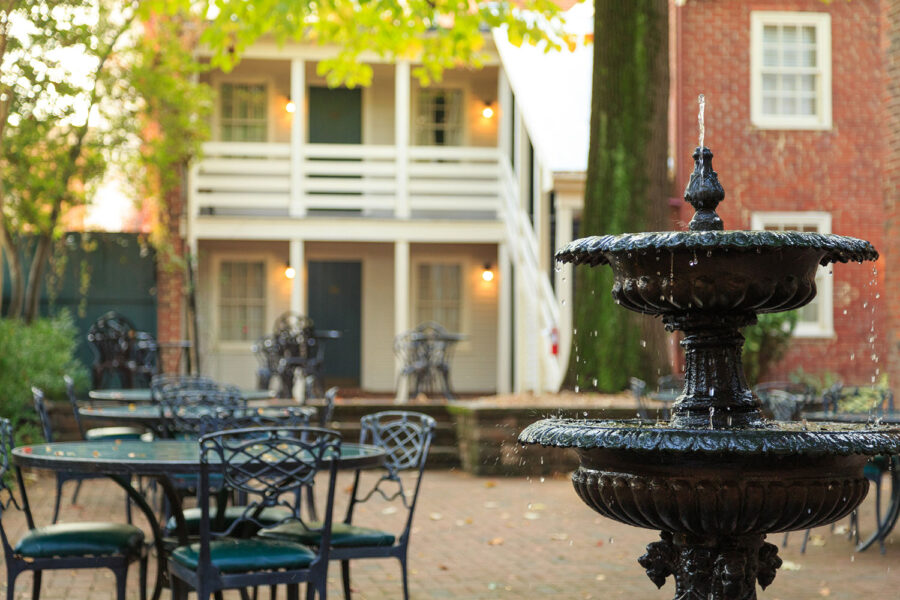 Richmond Regional Tourism
Richmond Regional TourismLinden Row Inn
DAY 2
Experiencing the region’s Civil War battlefields presents a rewarding challenge to visitors. Richmond National Battlefield Park is not one contiguous footprint but rather comprises a series of separate units, mostly connected by a driving tour route. The park brochure lists online mapping addresses to simplify finding your way, as driving trail signage can be easily missed. Whether sticking to the driving tour or including visits to sites off the main route, plan to devote a full day to exploring the battlefields.
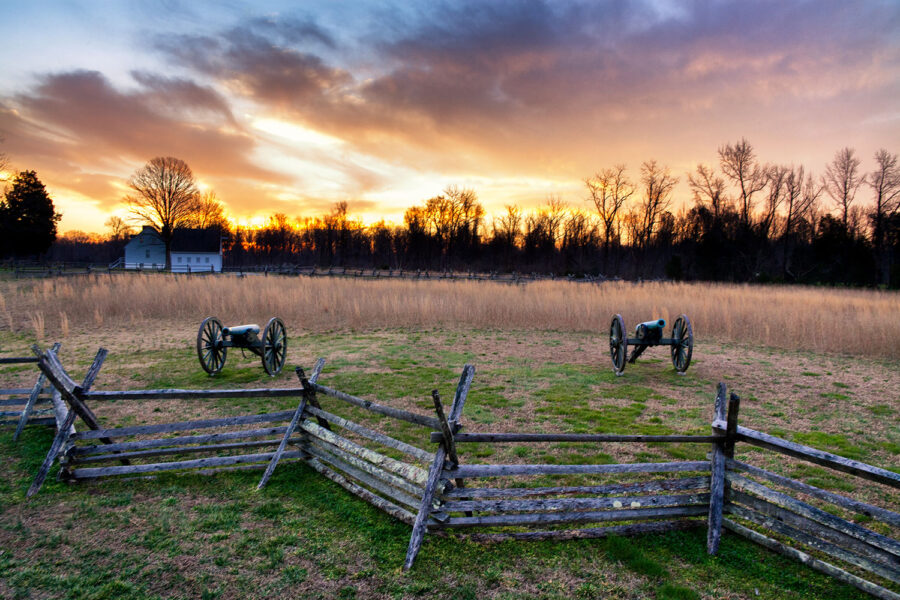 Richmond Regional Tourism
Richmond Regional TourismGaines’ Mill Battlefield

MORNING
Immerse yourself in the battles around Richmond with an all-morning tour of your pick of 1862 and 1864 battlefields— including Beaver Dam Creek, Totopotomoy Creek, Gaines’ Mill, Cold Harbor, Glendale, and Malvern Hill— within the Richmond National Battlefields footprint. A visitor center and restrooms are at Cold Harbor. Consult the park’s website for seasonal hours. Interpretive hiking trails can be enjoyed both for their history and nature. You’ll also drive through the heart of the New Market Heights battlefield (not yet open to the public), where 14 members of the United States Colored Troops won Medals of Honor.

AFTERNOON
At lunchtime, take a scenic backtrack on historic Route 5. Within a half-hour drive you will find excellent casual dining at Indian Fields Tavern (Call 804-829-2200) on the Capital Bike Trail. Alongside its good food and outdoor dining option, it has a brewery. Upper Shirley Vineyards (Call 804-829-9463) is a more upscale experience, with delightful lunch dishes and in-house wines. (Both restaurants are closed Mondays and Tuesdays.)
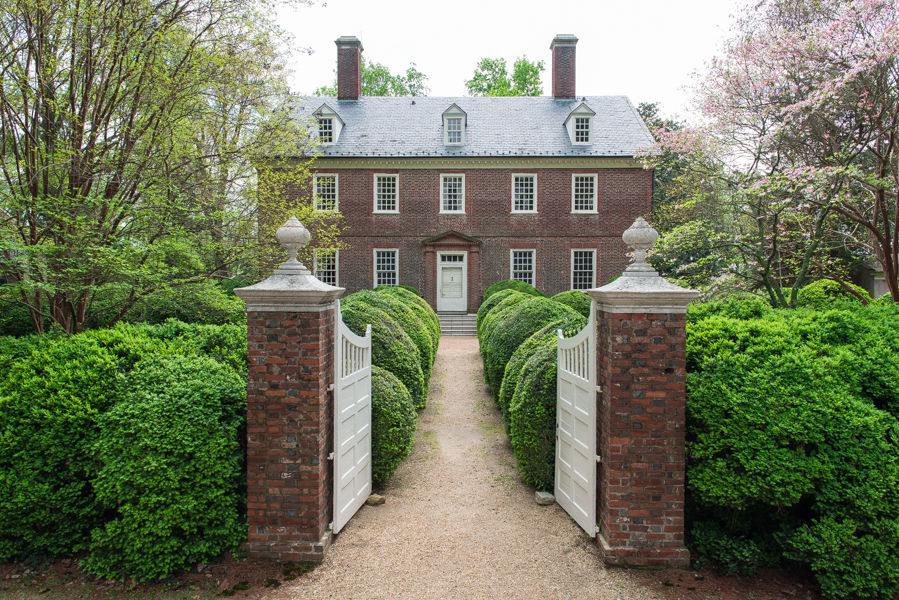 Berkeley Plantation
Berkeley PlantationFront gate and entrance for the Berkeley Plantation
Continue your excursion with a first stop at Berkeley Plantation (Call 804-829-6018), the birthplace of President William Henry Harrison and the site of Harrison’s Landing, where George B. McClellan made his headquarters and rested his army after the Battle of Malvern Hill. It was during that encampment that Union general Daniel Butterfield composed the bugle call Taps. Continue on to Deep Bottom Park. After the Battle of Cold Harbor, Ulysses S. Grant crossed the James River here on pontoon bridges, advancing his army toward Petersburg. A nearby Civil War Trails wayside shows a famous wartime image of the crossing site. Look for yellow spray-painted “footprints” at the modern boat launch marking where Union soldiers and the photographer stood in the photo.
Next, drive on to nearby Fort Harrison (located on your Richmond Battlefield Park map). This imposing earthwork was attacked and overrun by Union forces on September 9, 1864, as part of the larger Battle of Chaffin’s Farm. A fine interpreted trail leads through the fort. Nearby roads lead to Fort Hoke, Fort Brady, and other preserved earthworks that saw fighting in Grant’s 1864 effort to capture Richmond.

NIGHT
After a freshen-up at the hotel, follow your nose to Q Barbeque (Call 804-261-7227) on Highway 1 north of Richmond. Don’t let its shopping center location fool you; the food here is terrific (and don’t miss the hushpuppies). Or you might travel to the nearby town of Ashland, where The Iron Horse (Call 804-752-6410) serves up New Southern fare trackside. More than 50 trains a day make Ashland a train-lover’s destination.
DAY 3

MORNING
Take a walk along the Richmond riverfront at Historic Tredegar, location of the Confederacy’s largest ironworks. A suspended pedestrian walkway under the Robert E. Lee Bridge leads across to Belle Isle, site of a Union prisoner-of-war camp. Then visit the White House of the Confederacy (Call 804-649-1861, ext. 300). Built in 1818, this National Historic Landmark was home to Jefferson Davis and his family during the war and is outfitted with a host of original furnishings. President Abraham Lincoln visited the house after the fall of Richmond. Reserve your tour in advance online to make sure you secure a pre-lunch tour.

AFTERNOON & EXIT
For lunch, explore Carytown, a fun and funky mile-long stretch of Cary Street filled with shopping and dining venues. From French crepes to Mexican street tacos, you’ll find something good to eat.
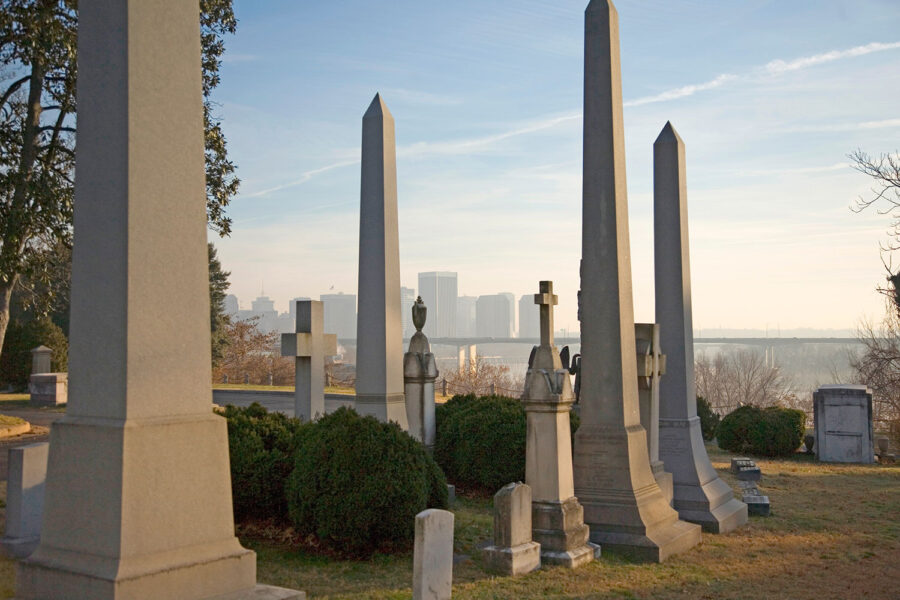 Richmond Regional Tourism
Richmond Regional TourismHollywood Cemetery
End your Richmond visit at historic Hollywood Cemetery (Call 804-648-8501). Founded in 1847, the sprawling garden cemetery is the resting place of two U.S. presidents (James Monroe and John Tyler), one Confederate president (Davis), 25 Confederate generals (including Stuart and George Pickett), and as many as 18,000 Confederate soldiers—along with Pulitzer Prize-winners, a U.S. Supreme Court justice, and many other notables from Virginia history. Stop at the cemetery office for a map showing the locations of its most interesting burial sites.

